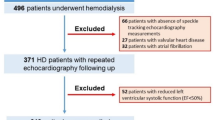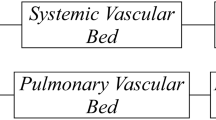Abstract
Background:
There exists a sub group of patients with uremic cardiomyopathy who experience resolution of heart failure following hemodialysis. It has been hypothesized that these patients are fluid overloaded, and following hemodialysis, show improvements in cardiac geometry and function. We wanted to study their clinical, biochemical and echocardiographic features to define any other additional characteristics.Aim: To define characteristics of reversible systolic dysfunction.Methods: We studied 72 patients with chronic kidney disease on hemodialysis of whom 52 presented with congestive heart failure, over a period of 190 days. We studied their echocardiographic profile and blood biochemistry parameters including troponin I and C reactive protein.
Results:
There were 29 patients with systolic dysfunction (LVEF≤40%). Twenty three patients with preserved systolic function, had diastolic dysfunction. Of the 29 patients with systolic dysfunction, 10 patients had significant improvement in NYHA functional class, and left ventricular dimensions (LVIDd:59.8±2.6 mm to 55.9±2 mm and LVIDs:51.8±1.8 mm to 34±1.2 mm; p<0.001) with significant increase in left ventricular ejection fraction (30.5±5% to 50.1±4%; p<0.001). These patients had the highest serum levels of troponin I (p=0.024) which decreased significantly with recovery of cardiac function. In the patients with persistent systolic dysfunction and in the patients with diastolic function, the troponin I remained high. The troponin I was significantly lesser in the control group (p=0.002).
Conclusions:
A sub group of patients with uremic cardiomyopathy demonstrated reversible left ventricular systolic dysfunction, and high levels of serum troponin I levels at presentation, which regressed with recovery of ventricular function.
Similar content being viewed by others
Article PDF
Author information
Authors and Affiliations
Rights and permissions
About this article
Cite this article
Adhyapak, S., Iyengar, S. Characteristics of Uremic Cardiomyopathy with Reversible Systolic Dysfunction. Nat Prec (2009). https://doi.org/10.1038/npre.2009.3199.1
Received:
Accepted:
Published:
DOI: https://doi.org/10.1038/npre.2009.3199.1



